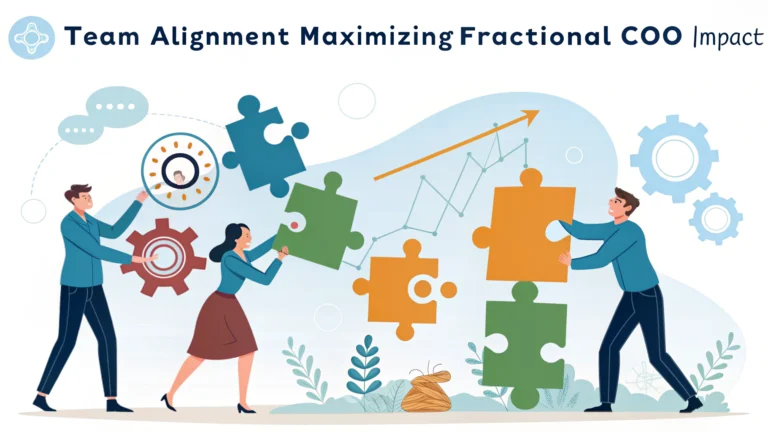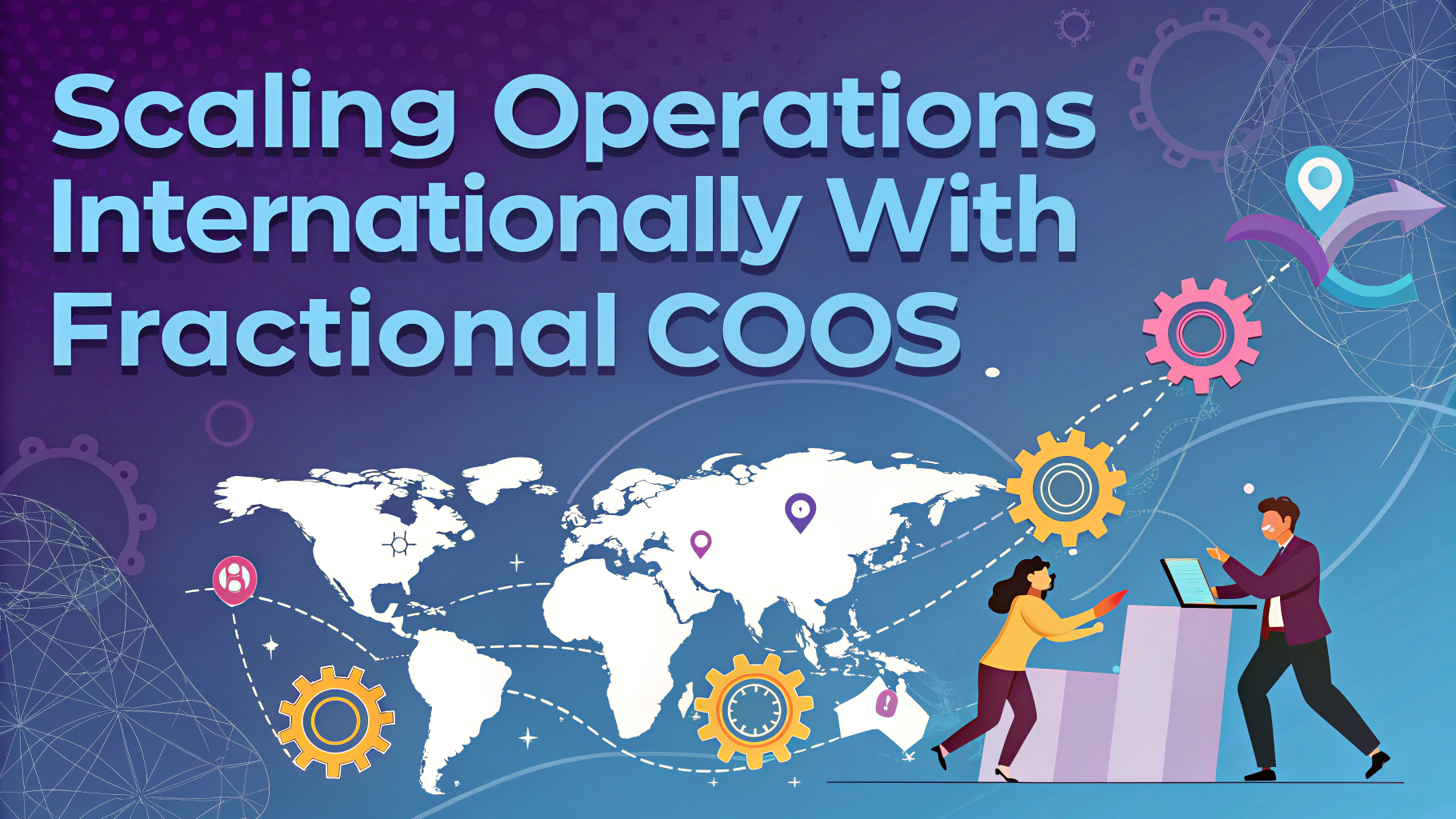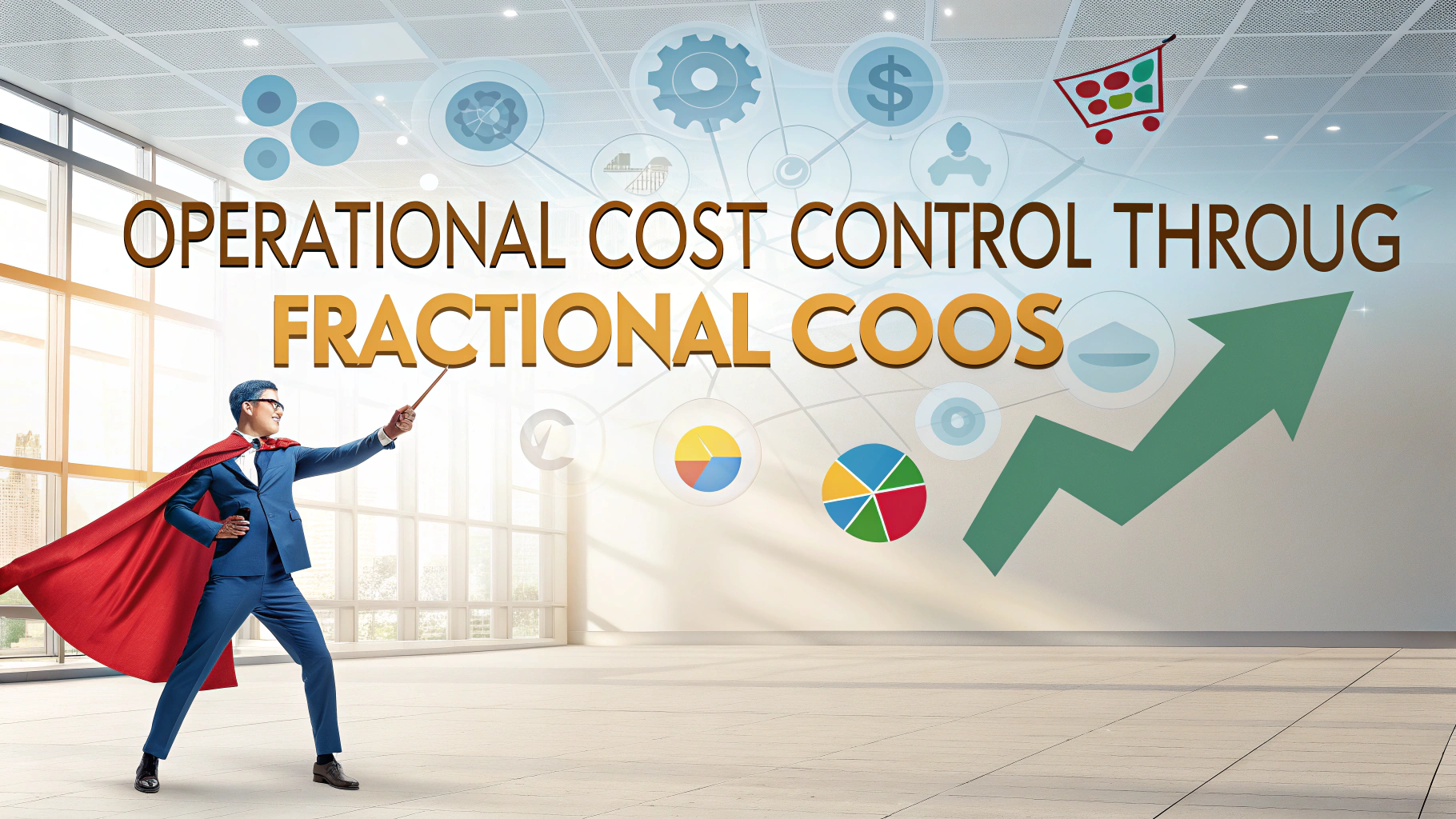Team alignment stands as a cornerstone of success for any fractional COO engagement, directly impacting operational effectiveness and organizational growth.
Working across multiple organizations demands clear communication channels, defined expectations, and synchronized workflows to achieve meaningful results within limited time constraints.
This guide explores practical strategies for fractional COOs to foster team alignment while maximizing their impact across client organizations.
Essential Components of Team Alignment
- Clear mission and vision statements
- Defined roles and responsibilities
- Measurable objectives and KPIs
- Communication protocols
- Decision-making frameworks
Setting Up Communication Channels
Establish dedicated Slack channels or Microsoft Teams spaces for real-time communication with each client team.
Schedule regular check-ins through video conferencing platforms like Zoom or Google Meet, maintaining consistent meeting cadence.
Implement project management tools such as Asana, Monday.com, or Trello to track progress and assignments.
Creating Accountability Systems
- Weekly Updates: Standardized reporting templates
- OKR Tracking: Quarterly goal monitoring
- Performance Metrics: Data-driven evaluation systems
- Task Management: Clear ownership and deadlines
Remote Team Management Best Practices
Document all processes and procedures in a centralized knowledge base using tools like Notion or Confluence.
Establish regular office hours for team members to seek guidance or discuss concerns.
Create virtual team-building activities to maintain engagement and connection.
Tools for Effective Team Alignment
| Category | Recommended Tools |
|---|---|
| Project Management | Asana, Monday.com, ClickUp |
| Communication | Slack, MS Teams, Zoom |
| Documentation | Notion, Confluence, Google Workspace |
Measuring Alignment Success
- Employee engagement scores
- Project completion rates
- Team velocity metrics
- Communication effectiveness surveys
- Client satisfaction ratings
Next Steps for Implementation
Start with a team alignment assessment using standardized evaluation tools.
Develop a 30-60-90 day plan for implementing alignment strategies.
Schedule regular alignment reviews to adjust and optimize processes.
Contact professional fractional COO networks or organizations like COO Alliance for additional resources and support.
Building Cross-Functional Collaboration
Foster partnerships between departments to break down silos and enhance operational efficiency.
Create joint initiatives that encourage teams to work together toward common objectives.
Implement cross-training programs to build versatility and understanding across teams.
Change Management Strategies
Communication Planning
- Develop clear messaging frameworks
- Create feedback loops for continuous improvement
- Establish change champions within each team
Implementation Support
- Provide training and resources
- Monitor adoption rates
- Address resistance proactively
Risk Management and Mitigation
Identify potential alignment challenges before they impact operations.
Develop contingency plans for critical processes and workflows.
- Regular risk assessments
- Backup communication channels
- Emergency response protocols
Scaling Alignment Practices
Document successful alignment strategies for replication across different client organizations.
Create scalable templates and frameworks that can be customized for various team sizes.
Driving Sustainable Team Success
Maintain consistent review and optimization of alignment practices to ensure long-term effectiveness.
Foster a culture of continuous improvement through regular feedback and adaptation.
Invest in ongoing team development to strengthen alignment capabilities and organizational resilience.
FAQs
- What is a Fractional COO and how does it differ from a full-time COO?
A Fractional COO is a part-time executive who provides operational leadership on a flexible basis, typically working with multiple organizations simultaneously. Unlike a full-time COO, they offer specialized expertise for a fraction of the cost and time commitment. - How can a Fractional COO help align teams within an organization?
A Fractional COO helps align teams by implementing clear communication protocols, establishing KPIs, creating standardized processes, and developing strategic frameworks that ensure all departments work cohesively toward common objectives. - What are the key indicators that a company needs a Fractional COO for team alignment?
Key indicators include siloed departments, inconsistent communication, lack of clear processes, missed deadlines, redundant work, scaling challenges, and misaligned departmental goals. - How long does it typically take to see results from a Fractional COO’s team alignment initiatives?
Initial improvements can be seen within 30-90 days, with significant organizational alignment typically achieved within 6-12 months, depending on company size and complexity. - What metrics should be used to measure the success of team alignment under a Fractional COO?
Success metrics include employee engagement scores, project completion rates, cross-departmental collaboration frequency, reduction in redundant work, improved decision-making speed, and achievement of organizational KPIs. - How does a Fractional COO establish effective communication channels across teams?
They implement structured meeting cadences, communication tools, reporting systems, and feedback loops while establishing clear roles, responsibilities, and decision-making protocols. - What role does technology play in a Fractional COO’s team alignment strategy?
Technology serves as an enabler through project management tools, communication platforms, automation solutions, and data analytics systems that support transparency and collaboration. - How does a Fractional COO handle resistance to organizational changes during alignment initiatives?
They address resistance through change management strategies, stakeholder engagement, clear communication of benefits, pilot programs, and gradual implementation approaches while maintaining focus on measurable outcomes. - What is the optimal engagement duration for a Fractional COO to achieve sustainable team alignment?
Most successful engagements last 12-18 months, allowing sufficient time for assessment, implementation, refinement, and knowledge transfer to internal teams. - How can organizations maintain team alignment after the Fractional COO’s engagement ends?
Organizations maintain alignment through documented processes, established governance structures, trained internal champions, regular alignment reviews, and embedded operational frameworks.







